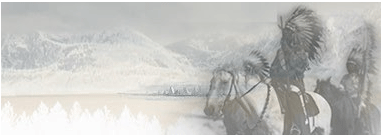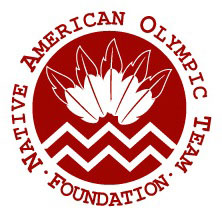Native Americans seek recognition
A decade ago, Stew Young was flying down the slopes of the Swiss Alps, hoping his personal best would be good enough to take him to the Olympics.
But the Corvallis-area iron worker was paying for his own training, and he was in his late 30s -- an old man by world-class athlete standards. He stopped short of his dream.
Now Young, a Tulalip Tribes member, is at the forefront of a movement to get more Native Americans into the Olympics. He and others are trying to help indigenous peoples overcome what they consider obstacles to competition -- from bias in sporting circles to poverty that prevents youths from receiving the early, elite training that creates the top echelon of athletes.
Part of that effort involves a handful of Native American organizations in the United States and Canada seeking International Olympic Committee recognition as sovereign nations, which would allow them to establish what Young calls the North American Indigenous Olympic team. To that end, Young traveled last week with 1968 Olympic skier Suzy Chaffee -- founder of the nonprofit Native American Olympic Team Foundation, which is organizing the Olympic bid -- to the Olympics in Turin, Italy, to make their case.
The creation of such a team composed of athletes from tribes across the continent faces daunting challenges, including established ideas of what constitutes a nation. But Native American groups have talked about creating their own team since a Mohawk lacrosse team competed for Canada in the 1904 Summer Olympics, Young said.
"This Olympic team is going to happen sometime," he said Wednesday before the trip. "We are taking the first steps."
Tribal effort
A spokesman for the United States Olympic Committee said Native Americans shouldn't expect anything more than the same chance other amateur athletes have to make their national teams.
"The U.S. Olympic Committee is recognized by the IOC as the steward for the Olympic movement in the United States," said Jeff Howard, director of corporate communications for the USOC. "And only one entity within a nation can have that distinction."
The International Olympic Committee doesn't recognize ethnic groups, said David Wallechinsky, vice president of the International Society of Olympic Historians.
It does, however, recognize people who have been colonized by geographic area, he said, which is why Guam and Puerto Rico, both U.S. territories, have their own teams. Hong Kong, now part of China, and Palestine, whose people and Palestinian Authority government are in the West Bank, also have Olympic teams. In Palestine's case, Wallechinsky said, the team was an acknowledgement that, "You're right, there is nowhere you are going to qualify" for the national team in your country.
Native Americans seek recognition
Chaffee, however, sees parallels to North America.
"If territories 20 miles wide can have Olympic teams," Chaffee said, "why can't sovereign Native American nations, who invented the roots of 10 Olympic sports?"
For the past decade, Chaffee -- a three-time world freestyle skiing champion, the first woman on the U.S. Olympic Committee and the "Suzy Chap Stick" star of a famed 1978 television commercial -- has developed opportunities for tribal youths to learn to ski and snowboard. By meeting Native American athletes such as Young, she realized their desire for a team of their own and used her knowledge of Olympic governance to draft a proposal dated Jan. 29 to Jacques Rogge, International Olympic Committee president.
The committee, involved last week with the Olympics in Turin, did not return calls or e-mails seeking comment.
In Yellowknife, Northwest Territories, Dene Chief Bill Erasmus is training an elite indigenous hockey team in the hope of building a claim for what he calls "Team Indigenous." His Olympic vision is sanctioned by the Assembly of First Nations, of which he is the regional leader.
"I know a lot of people are good athletes, but they don't excel because they don't get encouragement or they come from families that don't support them," Erasmus said. "They really don't want to be part of the Canadian team. If we had an indigenous team, I think we would have more people willing and able to compete at the highest levels."
That path to the Olympics is the same one the Northern Mariana Islands, a U.S. territory, recently traveled. Erasmus is working to get his team admitted into national and international federations that govern amateur hockey because, as Wallechinsky said, a nation that has been recognized by several international sports federations has better chances with the International Olympic Committee.
Achieving critical mass
In the 2002 Salt Lake Games, hundreds of dancers from several tribes took part in the opening ceremony -- an experience that Karuk Tribe member Naomi Lang, five-time national ice dancing champion who was competing in the games, called amazing.
But with the approach of the 2010 Winter Olympics in Vancouver, B.C., ceremonial participation isn't enough for Native American groups. They want to compete, and they're setting out to do so.
The Colorado-based nonprofit Native American Sports Council funds training for several Olympic- and Paralympic-bound athletes.
Native Americans seek recognition
The Squamish Nation in British Columbia is training the 22-member elite First Nations Snowboard Team for international competition. Financed with a $200,000 grant from the Vancouver 2010 organizing committee, the team aims "to put an athlete on the podium," spokesman Aaron Marchant said.
The team also has a recreation program that coaches 44 young snowboarders, from whom it hopes to cull the next generation of potential Olympians.
In time and with more funding, Marchant wants the team to spread across Canada. By increasing the numbers of First Nations youths it trains, he expects to increase the chances of identifying the one world-class competitor typically found in a pool of 10,000 athletes.
Support for the team is one of the ways the 2010 Winter Olympics organizing committee promises unprecedented involvement with native communities, said Maureen Douglas, community relations director for the committee.
Other commitments include economic development, efforts to identify athletic talent in native youths and involvement in 2010 medal ceremonies. The First Nations' hosts to the 2010 games also were scheduled to play a role in Sunday night's closing ceremony in Turin.
"Aboriginal communities don't necessarily have the resources to come to you," Douglas said. "You have to have the resources to go to them."
Every step toward the Olympic dream helps Native American communities by inspiring physical fitness and indigenous pride, said Young, the 51-year-old skier from Corvallis.
"Native American involvement in the Olympics is going to enrich the world," Young said. "And a North American indigenous team is going to represent the true inclusive spirit of the Olympics."
Kara Briggs: 503-294-5936; karabriggs@news.oregonian.com

